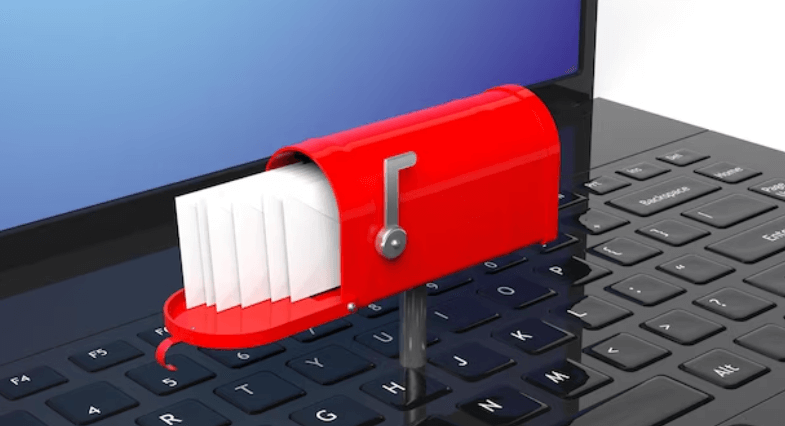10 Cyber-Enemies And How To Protect Yourself
6 Mins Read
Published on: 06 April 2023
Last Updated on: 26 September 2024

toc impalement
In today’s world, we rely increasingly on technology to carry out our daily tasks, from banking to shopping to communicating with clients and loved ones.
However, this increased reliance on technology also makes us vulnerable to cyber-attacks. Malware is one of the most common ways for cybercriminals to launch attacks.
You may have heard of malware before. A malware is intentionally created to cause damage to your computer, network, or other devices.
Understanding The Threats
There are many different types out there, and be aware they can also target your smartphone. Some of those are viruses, worms, trojan horses, ransomware, bots and botnets, adware, spyware, rootkits, fileless malware, and malvertising.
This article explains each one and provides protection tips against them so that you can keep your digital life safe.
Virus: The Invisible Intruder
In the digital world, viruses are invisible intruders that can wreak havoc on your computer. They are like tiny, malicious organisms that spread from one system to another, infecting everything in their path.
Like a common cold, viruses can cause a lot of damage, and they can be hard to get rid of once they infect a system. Protect yourself, prioritizing keeping your antivirus software and operating system up to date is essential.
You should also be careful when downloading and opening files, especially those from unknown sources. Always scan files before opening them, and avoid clicking on suspicious links or attachments.
If your computer becomes infected with a virus, there are several steps you can take to remove it. One of the best ways to remove a virus is through antivirus software.
Most antivirus programs have a feature that allows you to scan your computer and remove any viruses it detects. You may also need to manually remove any infected files or even reformat your hard drive to eliminate the virus.
Worms: sneaky malware
Have you ever heard of worms? No, not the slimy creatures that live in the ground, but the sneaky malware that can infect your computer and spread to others.
Worms are a type of malware that can quickly spread through networks and the internet, causing damage to your system and disrupting your network traffic.
Unlike viruses, worms don’t need to attach themselves to files to spread. Instead, they can exploit vulnerabilities in your operating system or applications, allowing them to move from one system to another without being detected.
Once a worm infects a system, it can cause many problems, from slowing down your computer to causing system crashes. If you suspect that your system is infected, there are several malware removal tools available that can help you get rid of the infection and prevent it from spreading to other systems. Act quickly, as worms can cause much damage if left unchecked.
So, how to prevent sneaky worms? The first step is to keep your operating system and software up to date with the latest security patches. You should also use a firewall to help block unauthorized access to your network, and be cautious when opening email attachments or clicking on links from unknown sources.
Trojan horse threat
Have you ever received an email with an attachment from an unknown sender?
One-click on an attachment sent by email, from an unknown sender is all it takes for your system to get infected with this type of malware.
Once installed, the Trojan horse can perform various malicious actions, including stealing sensitive information or allowing an attacker to take control of the system.
Always be cautious when downloading and installing software, use only reputable antivirus software, and keep it up to date. Plus avoid clicking on links or downloading attachments from unknown senders.
Additionally, consider using a firewall and keeping your operating system and other software up to date with the latest security patches to minimize vulnerabilities.
Ransomware: A Digital Kidnapper
Ransomware locks away critical files, demanding payment in exchange for the decryption key. It can be a costly and stressful experience for those who fall victim to it. The spread of ransomware can happen by clicking on suspicious email attachments, visiting malicious websites, or unknowingly downloading infected files.
Once infected, the malware can quickly spread throughout the system, encrypting files and demanding payment to restore them.
To protect against ransomware, keep operating systems and antivirus software up to date, as these updates often contain critical security patches.
Additionally, regularly backing up files to an external hard drive or cloud storage service can prevent data loss and minimize the impact of an attack. It is also crucial to be cautious when opening email attachments or visiting websites, especially those that seem suspicious.
Bots And Botnet Bandits
Bots and botnets are like a band of thieves that sneak into your computer and steal your data. They can secretly take control of your computer, allowing attackers to use it for malicious activities.
When many computers are infected, they can be combined into a botnet, which can carry out coordinated attacks such as DDoS (Distributed Denial of Service) or spreading spam.
Keep your operative system and antivirus updated. Use a firewall to prevent unauthorized access, and be cautious when clicking on links or downloading attachments from unknown sources.
It’s also a good idea to use a reputable VPN service when browsing the web to add an extra layer of security. Stay vigilant and keep your guard up to prevent these bandits from stealing your data.
Adware: Annoying Adds
Adware blasts unwanted advertisements on the user’s device. All of these adverts come with a follow link that will take you to a shady website. These ads can be annoying and sometimes lead to unwanted pop-ups or browser redirects.
Adware also causes your device to slow down, making it frustrating to use. To protect yourself, use antivirus and be selective when deciding to download or install the software.
You must consider using a trusted adware detection and removal software to fix your PC if you think it is infected. Another good idea is to regularly clean your browser history and cache because the adware can be installed through browser extensions or plugins.
Spyware: Unwanted Monitoring
Spyware can monitor and collect information from the user activity without their knowledge or consent. This includes capturing sensitive information, such as login credentials, web browsing history, and keystrokes.
Spyware can enter your system via email, software downloads, and illegitimate attachments. Hence, it’s crucial to keep your security software up to date and avoid unknown sources.
Rootkit Raiders: System Saboteurs
A rootkit provides unauthorized access to a computer system or network. It’s designed to remain hidden and undetected, allowing the attacker to control the system without the user’s knowledge.
Rootkits are commonly used to steal sensitive information such as login credentials and to install additional malware
Protection from rootkit comes easy when your system and security software is up to date. Be cautious of any unexpected changes to your system, such as new programs or files, and regularly scan your computer for malware.
Fileless: Memory attack
Fileless malware is a type of malware that resides in a computer’s memory, making it more difficult to detect and remove.
It’s often spread through social engineering tactics, such as phishing emails or malicious websites.
Additionally, use caution when visiting unfamiliar websites or downloading software from unknown sources.
Malvertising Dangers
Malvertising is when hackers use ads to spread malware online, which can infect your computer or device if you click on them. Hackers use malicious ads to redirect users to infected websites or to trick them into downloading malware.
Malvertising can be difficult to detect as they use multiple camouflaging techniques to keep themselves hidden. In fact, some malverts are so advanced that you can find them on legitimate websites.
Hence, beware of advertisements’ dangers. Always keep your security software up to date, and be cautious when clicking on ads or visiting unfamiliar websites.
Consider using an ad blocker to reduce your risk of exposure to malicious ads.
Conclusion
In conclusion, malware is a serious threat to individuals and organizations alike. By understanding the different types that exist out there and taking steps to protect yourself, you can minimize the risk of falling victim to an attack.
Keep your security software up to date, be cautious of suspicious emails and websites, and regularly scan your computer for malware.
Stay vigilant and informed, guarding your personal and sensitive information and contributing to a safer digital world for all.
Additional Reading:


















Comments Are Closed For This Article